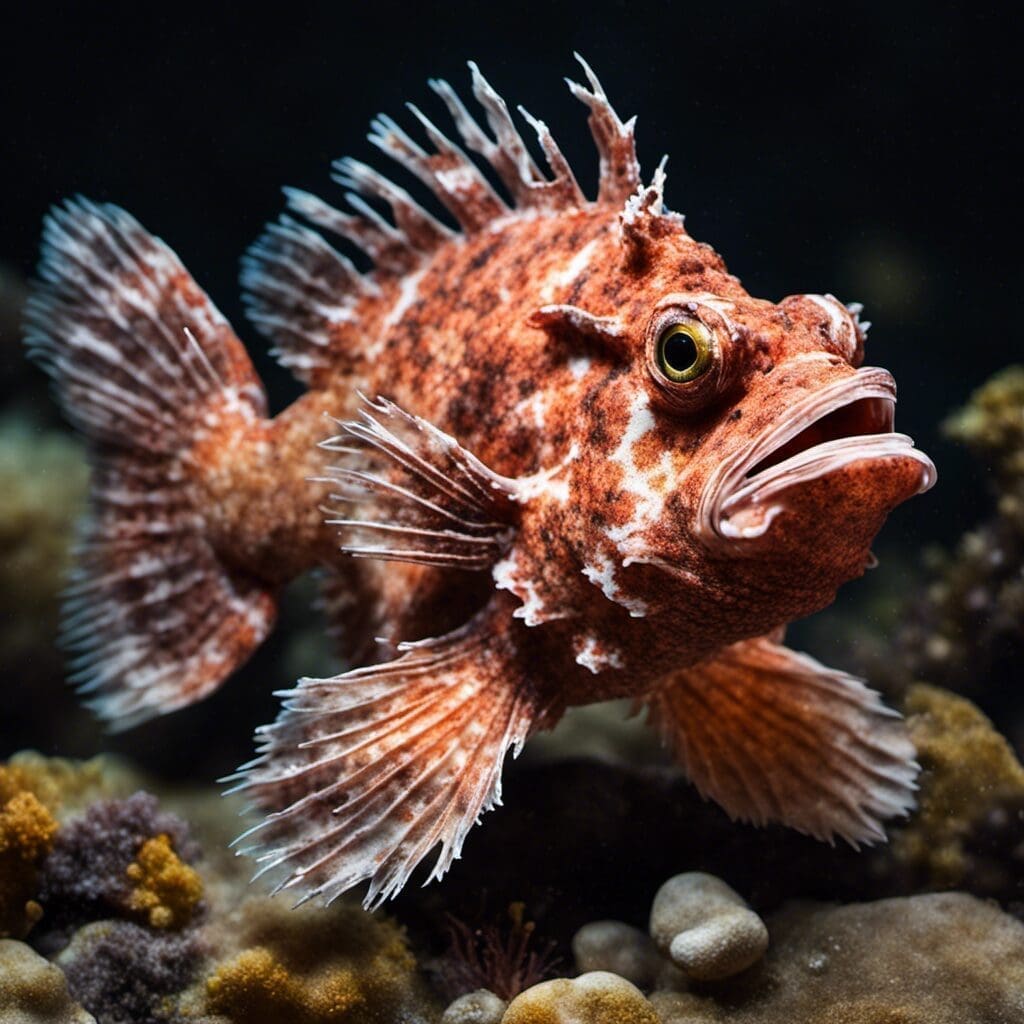Introduction
The California Scorpionfish, also known as “Scorpaena guttata”, is a member of the Scorpionfish family, a family known for their venomous spines. These incredible fish provide not only an intriguing visual spectacle for divers, but also a challenging and rewarding fishing target.
Conservation Status
Currently, the California Scorpionfish is not considered an endangered species and its conservation status is listed as “Least Concern” by the International Union for Conservation of Nature (IUCN). However, conservation efforts continue to monitor the population to maintain their stable presence.
Statistics
| Aspect | Average | Range |
|---|---|---|
| Length | 30 cm | 17 – 43 cm |
| Weight | 1.2 kg | 0.5 – 2 kg |
| Average Lifespan | 7 years | – |
Distribution
The California Scorpionfish inhabit the eastern Pacific, particularly the coastlines of California, USA and Baja, Mexico. They are residential fishes, showing no migration patterns.
Habitats
- Water Type: Marine
- Depth Range: From shallow water to depths of 600 feet
- Temperature Range: Prefers warmer waters (up to 77°F)
When and Where to See
California Scorpionfish are nocturnal species, hence, spotted more frequently during night dives. They are found all year round, but their presence is particularly noticeable from July through December.
Best Fishing Locations
- Baja California, Mexico
- Point Loma, San Diego, California
- Santa Catalina Island, California
- Santa Cruz Island, California
- Santa Monica Bay, California
These fish usually rest in crevices during the day and come out to hunt at night. Look for rocky outcrops and lagoons, as Scorpionfish often use such environments to ambush their prey.
How to Catch
- Preferred Bait or Lures: Squid, Sardines, or Anchovies
- Fishing techniques: Bottom fishing
- Best time: Night
Identification Guide
The California Scorpionfish has a broad mouth, large pectoral fins and a fat body covered with venomous spines. They have a mottled red, brown and white coloration that enables them to blend in perfectly with their environment.
Culinary
- How to Cook: Grilled, fried, or used in soups
- Taste Profile: Mild and delicate, sweet flavor
- Nutritional Information: An excellent source of protein and Omega-3 fatty acids
Additional Information
The California Scorpionfish has a quiet disposition, usually lying in wait for unsuspecting prey. Their main predators are larger fish species and sea birds, while human-induced threats include overfishing and habitat degradation.
References and Further Reading
- Eschmeyer, W. N., & Herald, E. S. (1983). A field guide to Pacific coast fishes: North America. Houghton Mifflin Harcourt.
- Love, M. S., Yoklavich, M., & Thorsteinson, L. (2002). The rockfishes of the northeast Pacific. Univ of California Press.

